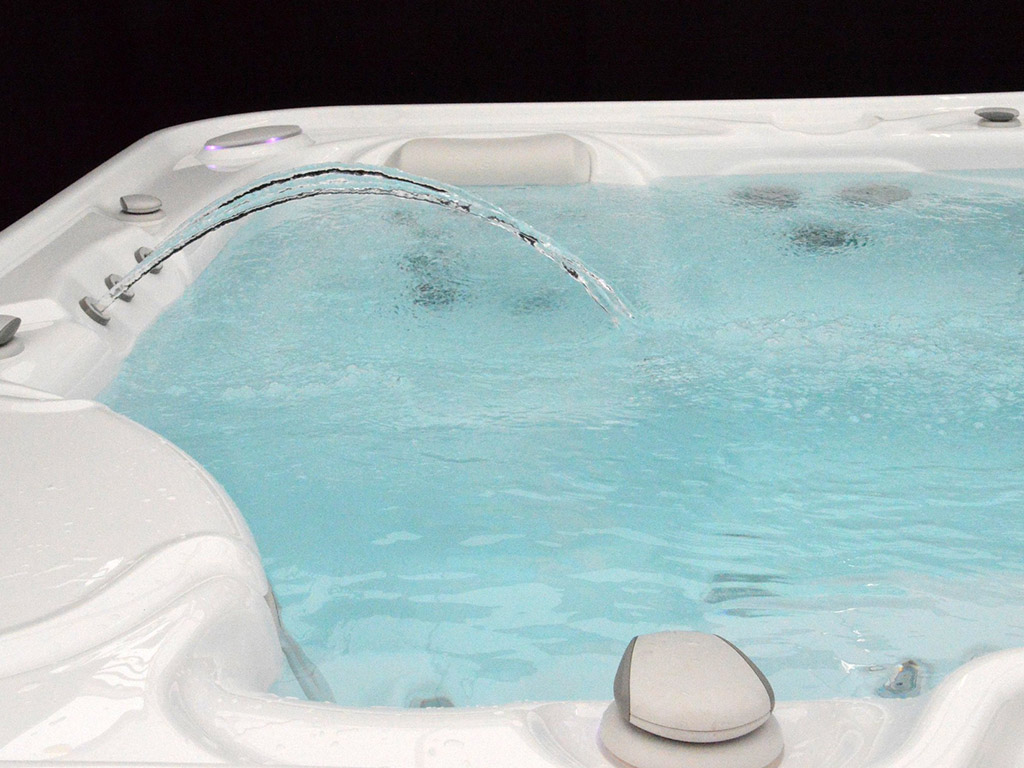
Chlorine is the safer and more cost effective choice for your Family
Chlorine is highly effective at killing bacteria, viruses, and algae quickly. It is a fast-acting sanitiser and is commonly used in swimming pools.
Bromine is also a potent sanitiser however it works more slowly than chlorine and being acidic can be a lot harsher on swimmers and equipment.
Overall Chlorine is the preferred choice over Bromine since it is less corrosive to equipment, has less pungent odour and irritation on the skin, and purely is more effective as a sanitiser.

Bromine can be damaging to your Health and your Equipment!
It is important to note Bromine eventually forms bromates which are potential human carcinogens, and as a result some countries have subsequently banned the use of Bromine.
When using Bromine the water pH will quickly become quite acidic, potentially leading to severe metallic corrosion of pumps and heaters if not managed correctly. This can quickly become very expensive for the Spa owner to manage – and is entirely avoidable by using Liquid Lithium instead.
Our Range
-
Liquid Perox 210
$48.00 -
EasyTreat Pool – Liquid Magnesium 5L/15L
$45.00 – $95.00 -
EasyTreat Pool – Liquid Pool Acid 1L/2.5L
$9.50 – $12.50 -
EasyTreat – Liquid Buffer 500ml/1L/5L
$11.05 – $32.69 -
EasyTreat – Liquid Sunblock 500ml/1L/5L
$13.61 – $45.62 -
Liquid Lithium – 500ml/1L/5L
$35.00 – $135.00
Frequently Asked Questions
What is Liquid Lithium?
Liquid Lithium is a solution of Lithium Hypochlorite containing 100 gpl of available chlorine as Lithium hypochlorite.
Do I need a special Lithium Test Strip?
No, any brand of test strip that measures Free and/or Available Chlorine will be suitable.
How do I dose Liquid Lithium?
The conservative approach is to follow the instructions on the back of the container.
Alternatively, follow the article on the Bond website “Liquid Lithium – Simple Dosing Instructions“. You can operate your spa continually by dosing LL to obtain a reading of 3-4 ppm of free chlorine, and Super Chlorinating weekly.
Why use Liquid Lithium?
- Most stable sanitizer available for use in heated spas.
- Will not damage spa pumps, heaters and other metallic spa components.
- Will not damage fiberglass and acrylic spa components
- Easiest to use – Minimal impact on pH, alkalinity, and hardness which means less adjustment and cost for these additives.
- No need to dump spa water due to cyanurate build-up.
- Better chance of retaining manufacturer’s warranty.
Why can't I get chlorine reading when I first dose with Liquid Lithium?
When you treat water for the first time with a chlorine sanitizer, you may find that it is difficult to achieve a free chlorine reading.
Fresh water is not always “fresh”. It may contain dissolved vegetable matter, animal and bird droppings, minerals such as iron and manganese, or cyanuric acid as an additive in pool water preparation.
All of these “contaminants” will consume your sanitiser chlorine from your first water treatment. The APVMA has prescribed an “Initial Start-up Shock” which has been based on impurities in average Australian water, however, many pool/spa water sources require additional sanitizer to satisfy the chlorine demand of the “contaminants”. Once the “contaminant” demand has been satisfied, it will be possible to obtain a free chlorine reading.
On the other hand, water containing too much chlorine may bleach the colour from the test strip which will also prevent you from getting a reading.
Can I mix Liquid Lithium with Other Sanitisers?
See article “Use of Chlorine with other Sanitising Systems” on the Bond website
Why Choose Bond Chemicals
Bond Chemicals is Australian owned and managed by two entrepreneurial Chemical Engineers with over 40 years experience in the industry.








